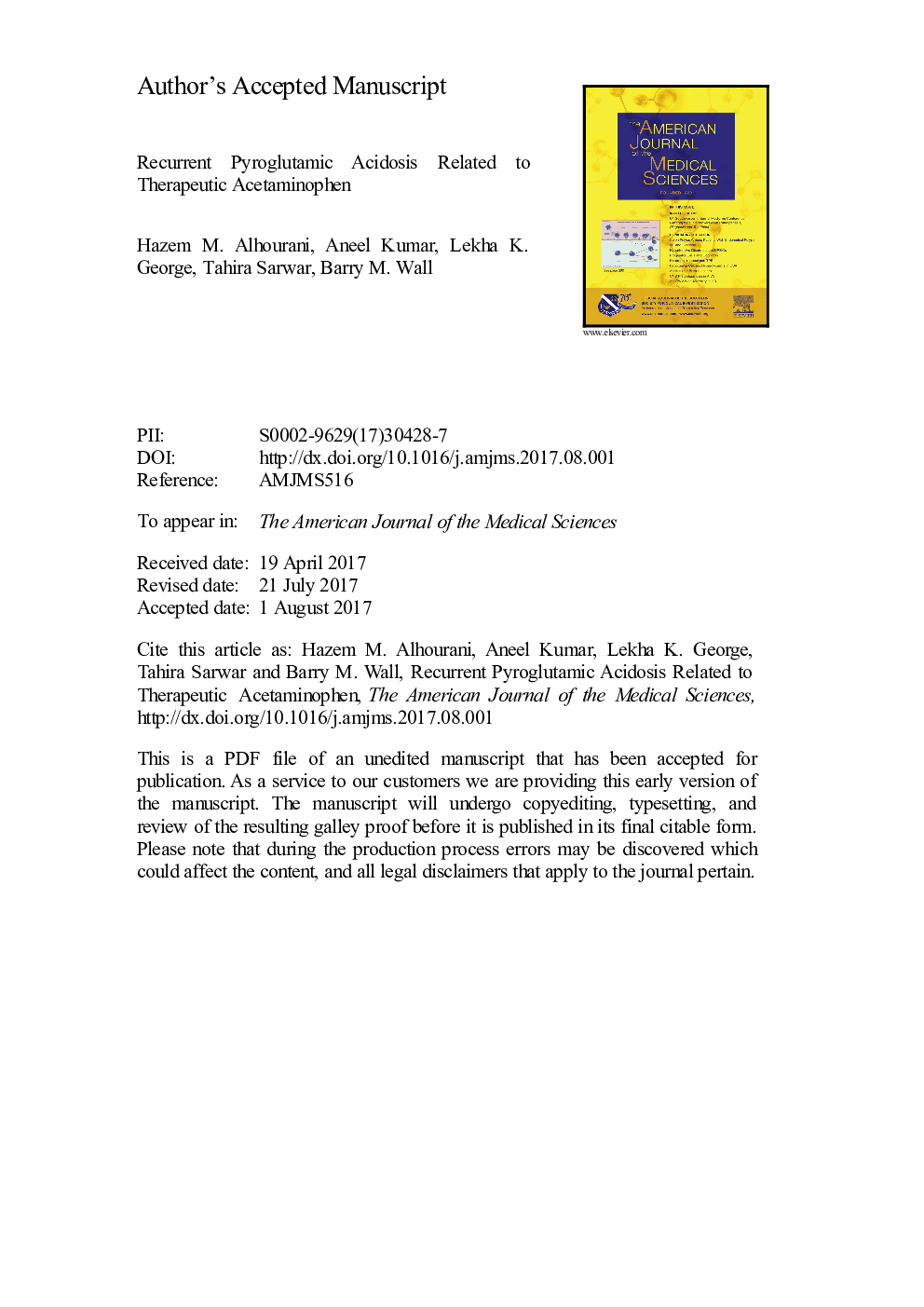| Article ID | Journal | Published Year | Pages | File Type |
|---|---|---|---|---|
| 8651777 | The American Journal of the Medical Sciences | 2018 | 10 Pages |
Abstract
Pyroglutamic acid, an intermediate in glutathione metabolism, can lead to elevated anion gap metabolic acidosis as rare complication of acetaminophen therapy in adults. Acquired pyroglutamic acidosis has been observed primarily in settings associated with glutathione deficiency. Risk factors for glutathione deficiency include critical illness, chronic liver or kidney disease, advanced age, female gender, alcohol abuse, malnutrition, pregnancy, antiepileptic drugs, and chronic acetaminophen use. Diagnosis of pyroglutamic acidosis requires both the exclusion of common etiologies of increased anion gap metabolic acidosis and a high index of suspicion. Treatment involves discontinuation of acetaminophen, supportive care, and addressing risk factors for glutathione deficiency. The current report describes an ambulatory patient with multiple risk factors for glutathione deficiency, who developed recurrent pyroglutamic acidosis due to acetaminophen use with therapeutic blood levels of acetaminophen.
Related Topics
Health Sciences
Medicine and Dentistry
Cardiology and Cardiovascular Medicine
Authors
Hazem M. MD, Aneel MD, Lekha K. MD, Tahira MD, Barry M. MD,
